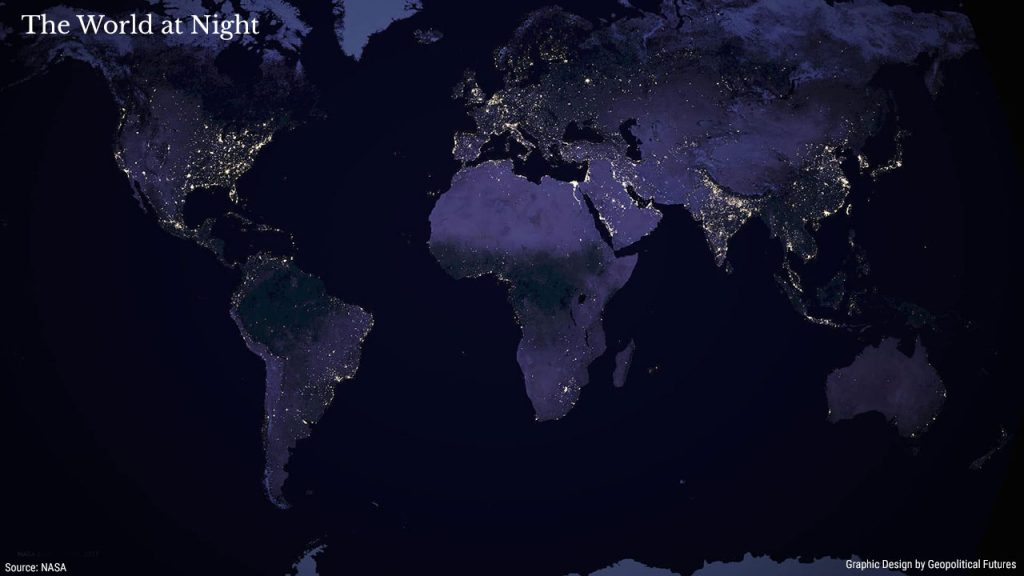Last week, we presented a map of the true structure of South America that showed that much of the land is impassable. On this map, you can see that developed and populated areas are even smaller and consolidated along the coasts, with a few concentrations along in the southern interior. Mexico, particularly in the north, shows significant concentrations.
Here are some other interesting features:
- In Europe, light is concentrated in Britain and the northwest, with another concentration in southern Germany. The rest of Europe consists of many separated concentrations. These peter out to the east. Russia has concentrations, but fewer as you move east.
- China looks very much like the rainfall/population map we published, with concentrations of lights in Han China to the east, and darkness to the west.
- Note the intensity of light along the northern Nile River in Egypt, Israel and the west coast of the Persian Gulf. Note the relative darkness of Iraq.
- India is quite dark. It resembles eastern China, but with concentrations throughout the entire country.
- Africa is overwhelmingly dark. Obviously, it has substantial population, but very limited development. Almost all lighting is along the coast and in South Africa, with the interior of the continent dark except in northern Africa.
A map of the world at night provides for a better understanding of life in different nations because ultimately human activity, rather than official borders, is what makes a country unique. The pattern of lighting tells us where life exists in a given country, which in many cases is a small subset of the total land mass of a state. The areas that are illuminated at night tell us not only about the degree of development in a country, but also the relative power of each state. Of course, humans exist in areas well beyond those that are illuminated at night, but the world that matters is much smaller than the totality of the world’s land mass.





